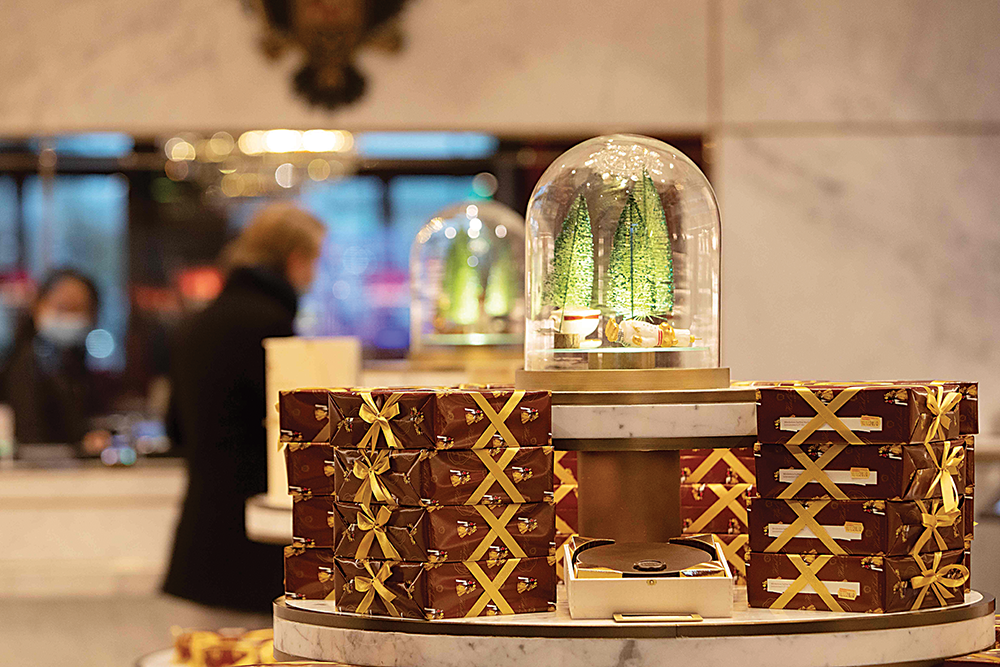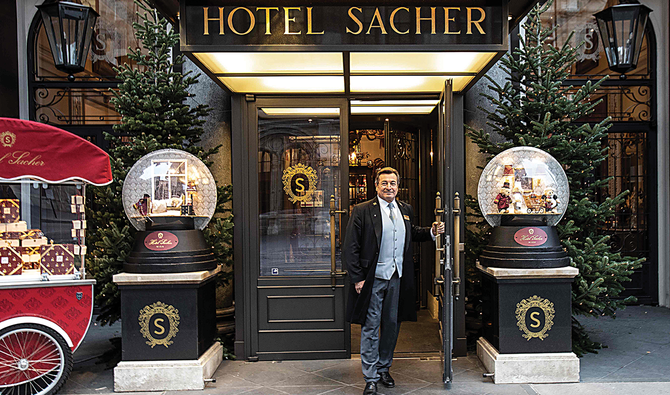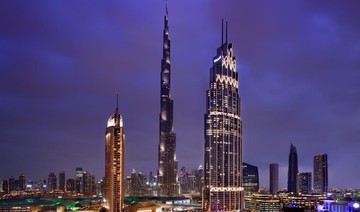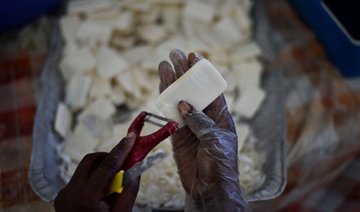VIENNA: The pandemic may have forced many of Vienna’s luxury hotels to close indefinitely as global travel restrictions keep away the millions of tourists who usually visit the Austrian capital every year.
But the Hotel Sacher is determined not to let fans of its world-famous chocolate cake go hungry.
The hotel’s concierge, Uwe Kotzendorfer, is selling “Sacher Torte,” as the rich delicacy is known, on a drive-in stand just across the road from Vienna’s prestigious State Opera house.
“I do a bit of everything now,” says Kotzendorfer, standing next to a small two-wheel cart stacked high with cakes, as he hands an imperial red bag containing one of them to a customer driving past in his BMW.
“I thought it was a fantastic idea,” says customer Claudia Bednar. “Because we can no longer travel, I am going to send one to my aunt in Germany for her 65th wedding anniversary,” she explains, then pays for the cake, which typically costs between €50 and €60 ($60 to $71), with her credit card.
The vast majority of the Sacher’s staff are now on government-subsidised furlough.
And the rooms and dining halls in the six neoclassical buildings — decorated with autographed images of previous guests such as Britain’s Prince Charles, Franco-German film star Romy Schneider and US opera singer Jessye Norman — are deserted.
Nevertheless, the hotel insists on displaying fresh flower arrangements in honor of the five business travelers staying there.
For those parts of the hotel not currently occupied, the management is taking the opportunity to carry out some much-needed maintenance, and Kotzendorfer often guides workmen around the deserted swathes of the building.

Sacher Torte was invented in 1832 by pastry chef Franz Sacher. (AFP)
According to owner and managing director Matthias Winkler, the Sacher is the last five-star hotel in Vienna that is still in family hands.
But it has survived a number of existential crises in the past and during the global economic crisis in 1934 even went bankrupt.
“We’ve gone through many trials since the creation of the brand and our family is still planning for the long term,” said Winkler, who took over the hotel from his mother-in-law in 2015.
The current virus-induced economic downturn is taking a heavy toll. International travelers typically account for more than 90 percent of the hotel’s annual 23,000 overnight stays, with rooms costing anything between €400 and €2,300 ($480-$2,700) per night in the low season.
However, with the virus lockdowns, that source of income has now been all but wiped out.
Sacher’s cakes, which are shipped and sold across the world, are helping keep the brand alive.
The Hotel Sacher and the Sacher Torte have a long history.
In 1832, a young pastry chef called Franz Sacher was working on a new recipe he hoped would become all the rage at the Habsburg’s imperial court.
The ingredients were whipped cream, a lot of cocoa, jam to add moisture, and a rich layer of chocolate frosting.
Forty-four years later, Sacher’s son, Eduard, opened the hotel in Vienna’s first district.
The city’s high society normally gathers for a dinner in the Sacher before the famous Opera Ball — but this year’s event has fallen victim to the pandemic.
























